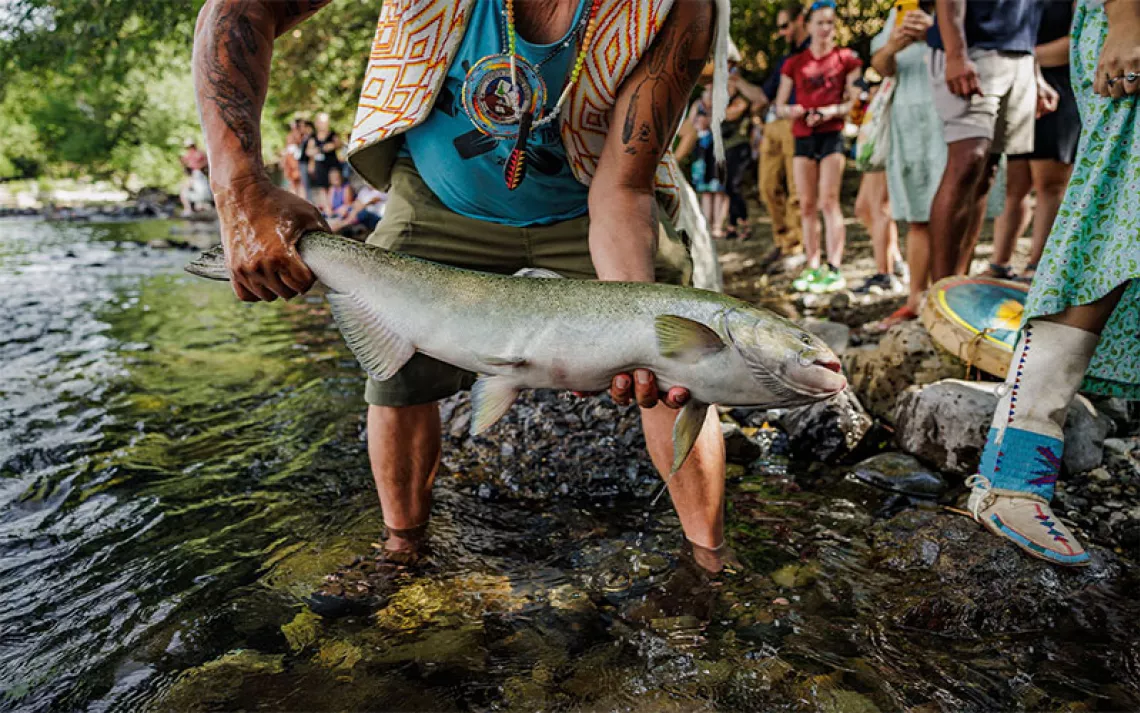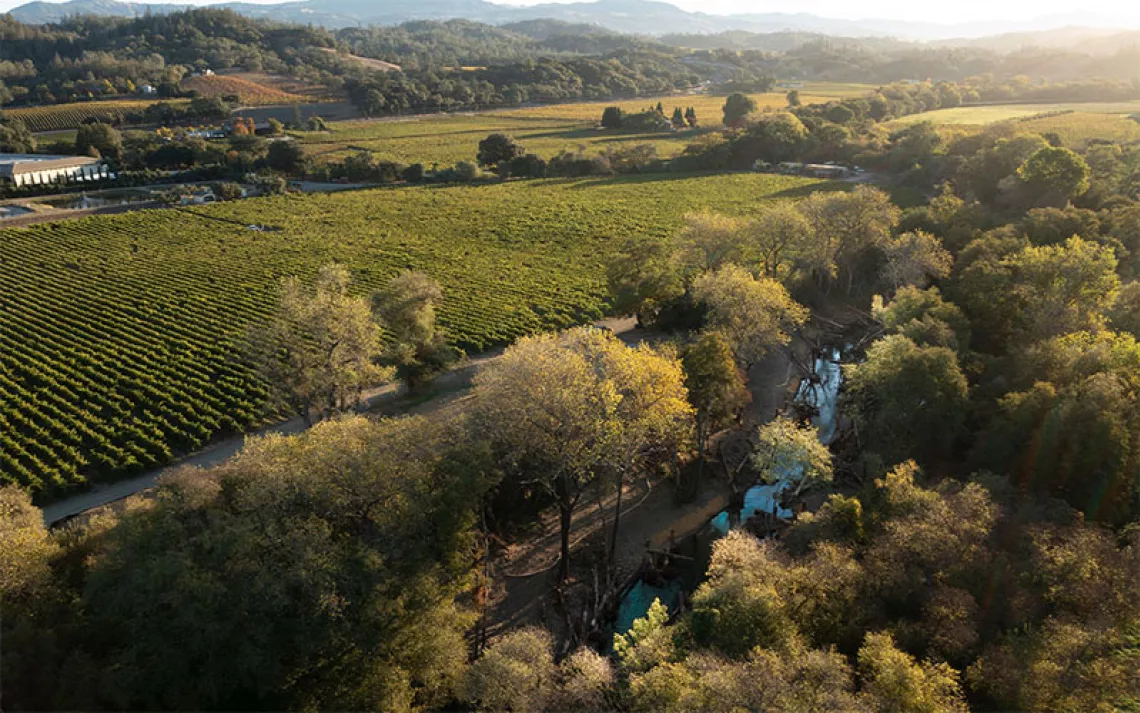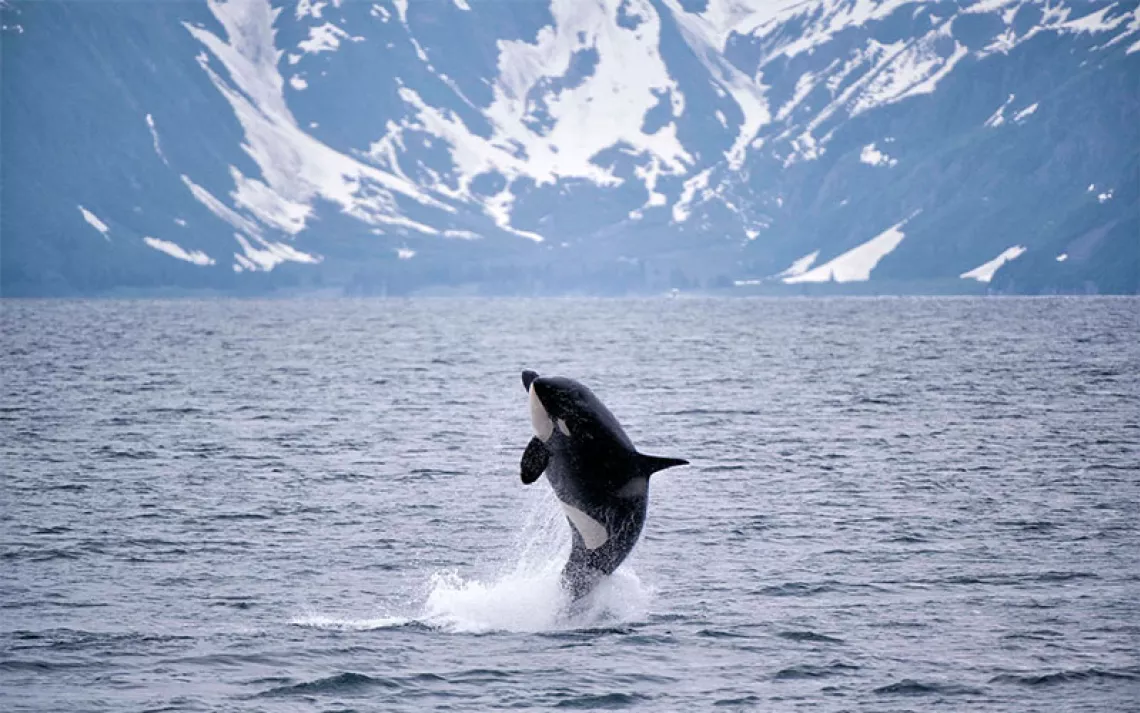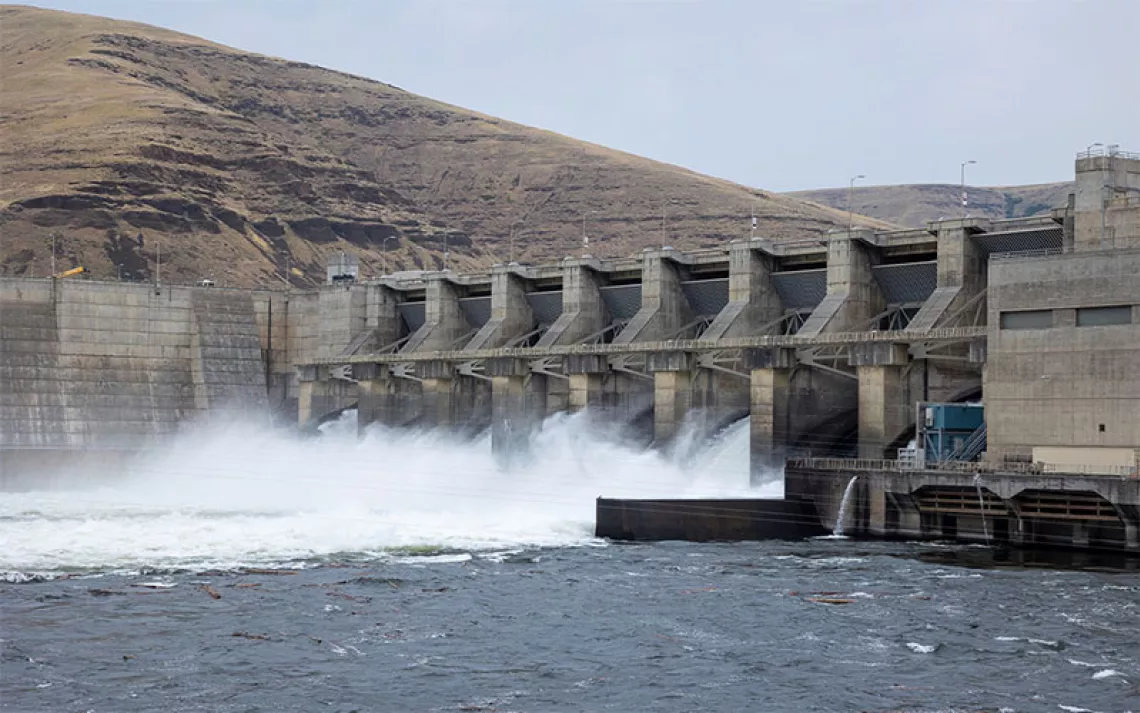On the One Hand: Salmon
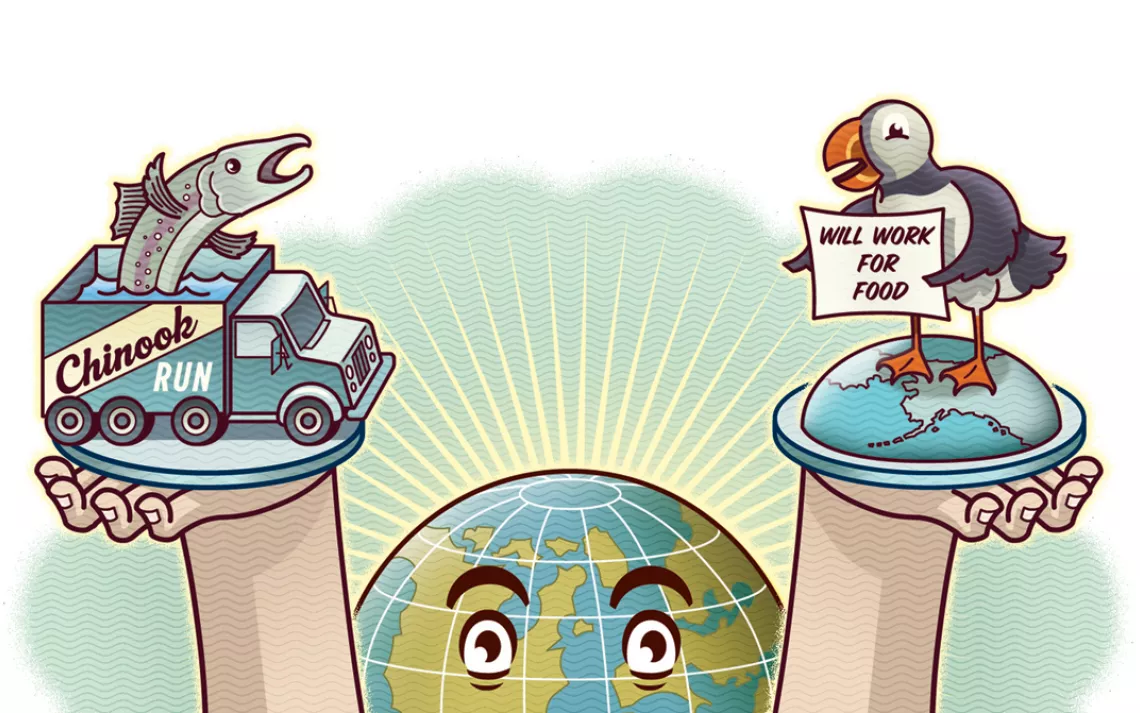
ON THE ONE HAND . . .
California's drought is imperiling its historic annual run of chinook salmon, worth an estimated $1.5 billion. With water levels far below normal and state farmers clamoring for what remains, salmon are returning from the ocean to spawn in rivers that are too warm and too shallow. The situation is equally rough for surviving smolts: As they swim downstream to the Pacific, they must navigate tepid channels, where they can get stranded or picked off by predators. This spring, California's Department of Fish and Wildlife trucked 26 million young salmon straight from hatcheries to the sea; another 100,000 were carried downstream by barge. Whether it will be enough to save the fishery won't be known until 2017, when this year's chinook return to spawn.
ON THE OTHER . . .
Pink salmon in the Bering Sea and North Pacific are so bountiful that they're hogging the chow needed by other marine creatures. Unlike other salmon species, pinks (a.k.a. humpback or humpy salmon) have rapidly adapted to warmer temperatures and now migrate upstream to spawn two weeks earlier than they did 40 years ago. When the juveniles return to the ocean, the warmer temperatures and abundant plankton boost their metabolism, allowing them to increase their body mass by 500 percent. But as the fat, hungry pinks ransack the oceanic buffet of plankton, squid, and mackerel, other sea creatures--particularly seabirds like puffins and kittiwakes--have to make do with the leftovers. An elegant solution: increase the number of pinks on the dinner plate.
*This story has been corrected.
 The Magazine of The Sierra Club
The Magazine of The Sierra Club
